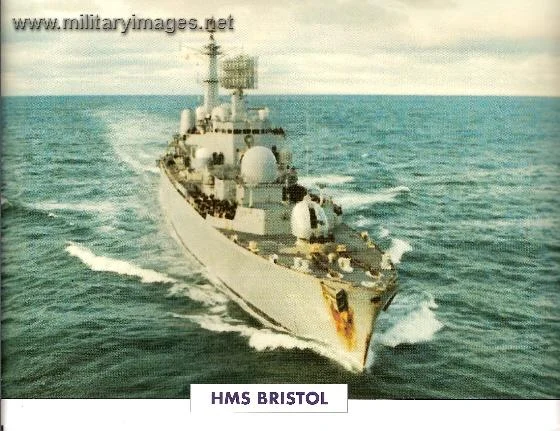1969 HMS BRISTOL. The biggest-ever British destroyer, HMS Bristol was in a class of her own, the carrier force she and her planned sister-ships were to have escorted having been cancelled even before she was laid down.
LARGE DESTROYER-ESCORTS
The Type 82 destroyers were to have made up the escort force for a new generation of British fleet aircraft carriers to replace those constructed to wartime designs, but the ships in question, Queen Elizabeth and Duke of Edinburgh, were cancelled while still in the design stage, in 1966. Bristols three planned sisters were cancelled, too, but she went ahead, largely as a result of a commitment made to the Royal Netherlands Navy for trials of a jointly-developed radar system, and also in the hope that the Dutch would order Olympus gas turbines for ships they were then planning.
STEAM AND GAS TURBINES
HMS Bristol was constructed by Swan Hunter in Wallsend. Laid down in mid-November, 1967, she was launched on 30 June, 1969, but not completed until 31 March, 1973. During design she had grown to be larger than the existing County class by almost 1000 tons at full load, though somewhat shorter. She was powered by COSAG (COmbined Steam And Gas), both powerplants being employed for high speed, and her steam turbines alone for economical cruising. In 1973, her steam plant was virtually destroyed by fire, but she managed to complete her assigned mission on her Olympus engines alone, which did much to establish the genre as a suitable naval powerplant.
TECHNICAL DATA
Type: Guided-missile destroyer
Machinery: 2-shaft COSAG; 2 steam turbines plus 2 Olympus gas turbines giving a total of 74,000sph
Dimensions (overall): Length, 154.3m(507ft); beam 16.8m (55ft)
Displacement: 6700t standard; 7700t full load
Draught: 6.8m (22.5ft) maximum
Complement: 407










